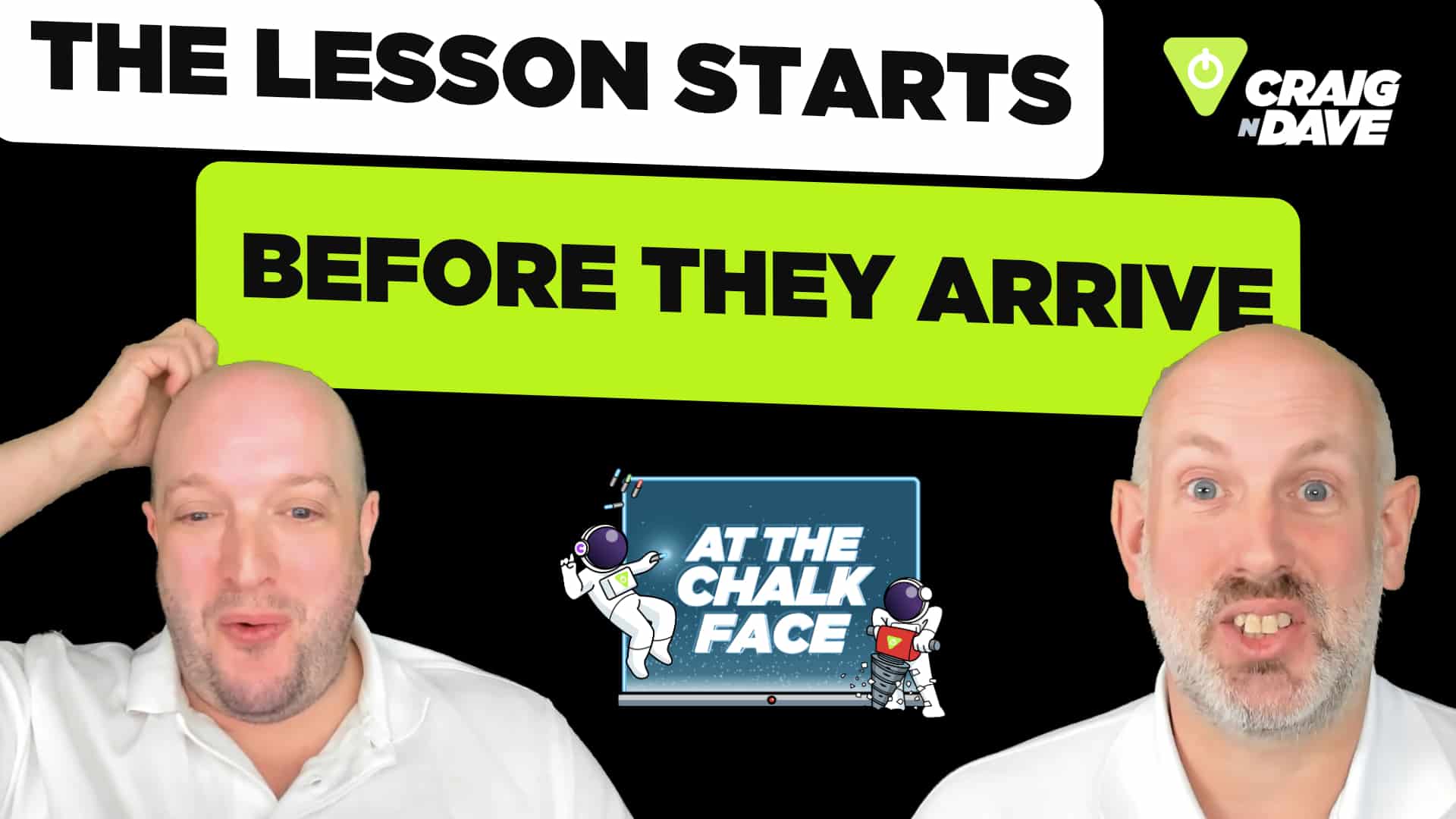
7 November 2025
In Computing, every minute counts. Setting high expectations isn’t about demanding work or creating unnecessary pressure—it’s about clarity. It means knowing exactly what you want from your students and using simple, consistent techniques to achieve it. The most effective teachers don’t leave the first few minutes of a lesson to chance. They use this time purposefully to establish routines, reinforce learning, and create a calm, focused atmosphere where students know what to do and why it matters. Here’s how you can make the beginning of every lesson count.
1. Meet and greet: the power of the doorway
The moment students arrive is your first opportunity to assert calm authority. Greet students at the door with their name, a smile and a clear expectation for how they should enter the room. This bottleneck puts you in control. Don’t allow students to just pile into the room. An orderly entry sets the tone for the rest of the lesson. Don’t hesitate to stop students from entering if they are being disruptive—this reinforces that your classroom is a place of focus and respect.
Tip: Use positive reinforcement for students who enter appropriately and calmly redirect those who don’t to leave and enter again.
2. Engagement on entry: establishing a routine
Idle time is the enemy of learning. Students should know exactly what to do the moment they walk in. Whether you call it a starter, do-now activity, or engagement on entry, the key is consistency. This routine builds a culture of focus and reduces wasted time.
Tip: “What are we doing?” should never be a question in your classroom.
3. Combat the forgetting curve with recall activities
The start of the lesson is the perfect time for retrieval practice. A well-designed recall activity helps students strengthen their memory and make connections with prior learning. However, avoid tasks with a fixed end point—some students will finish early and become disengaged.
Tip: Provide more work than there is time to complete.
4. Why Smart Revise Quiz is the perfect solution
For GCSE and A-level students, Smart Revise Quiz is a powerful tool. Its dynamic, never-ending loop of low-stakes multiple-choice questions ensures that students are always engaged. The platform uses intelligent algorithms for spacing, interleaving, and personalisation, targeting each student’s weaker areas and adapting the question order accordingly.
Tip: With Smart Revise no student finishes early and no student is left behind.
5. Preparing for the lesson ahead
Alternatively, use the start of the lesson to prime students for what’s to come. At A-level, Craig’n’Dave micro-activities are excellent for this purpose. At GCSE, every lesson includes a starter that aligns with the learning objectives, helping students transition into the right mindset.
Tip: If you use Smart Revise, it is best to stick to the routine. You can also use starter activities at any point in the lesson as class discussions or plenaries instead.
6. Inclusive and accessible activity
The 2025 Ofsted framework places a stronger emphasis on inclusion and equity. This means ensuring that all students, including those with SEND or from disadvantaged backgrounds, can access and engage with the starter activity. That’s why a low-stakes, low-barrier to entry activity is better for the start of the lesson. Inspectors will be looking for how well teachers identify and reduce barriers to learning. It is important that inclusive practices are embedded in everyday routines.
Tip: Too much challenge too soon can turn off students before they even begin.
7. Why seven minutes matters
The duration of your starter activity sends a message. Five minutes can feel rushed and unimportant. Ten minutes may seem arbitrary. But seven minutes? It feels intentional. It’s long enough to be meaningful, short enough to maintain momentum.
Tip: Odd numbers feel deliberate. Use them to your advantage.
8. Transitioning into the lesson
Once the initial activity is complete, have a clear, recognisable signal to begin the main lesson. This could be a phrase, a countdown, or a visual cue. The goal is for students to respond quickly and without repeated prompting.
Consistency breeds compliance. Familiar cues reduce friction.
9. Use consistent language and positive signals
High expectations are not just about what you do—they’re also about what you say and how you say it. The language you use in the classroom communicates your belief in students’ potential and shapes the culture of learning. When you speak with clarity, purpose, and positivity, you signal to students that they are capable, that their time matters, and that learning is serious business. Use consistent, positive phrasing that reinforces routines and expectations. For example, instead of saying, “Stop messing around,” try, “Show me you’re ready to learn.” Non-verbal cues are equally powerful. A raised hand, a countdown, or a visual timer can become familiar signals that prompt immediate responses without the need for repeated instructions.
Tip: Play the long game. Over time, these cues become part of the classroom rhythm, reducing the need for correction and increasing student autonomy.
10. Eliminate distractions before you begin
Before students enter the room do a quick sweep. Clear up any loose pens, paper and rubbish. Ensure the computers are turned on and ready for a student to log on. If there are technical difficulties the engagement on entry activity gives everyone else something to be working on while you diagnose the problem. Before diving into new content, ensure you have every student’s full attention. Techniques include gathering students at the front of the room, using screen-locking software to prevent off-task behaviour and waiting silently until you have 100% focus.
Tip: Own the room before you teach. Never compete with distractions—don’t talk if a student is talking, wait for perfect silence.
Final thoughts: routines build culture
High expectations aren’t about being strict—they’re about being consistent. When students know what to expect and what’s expected of them, they feel secure and ready to learn. The start of the lesson is your opportunity to build that culture, every single time.










